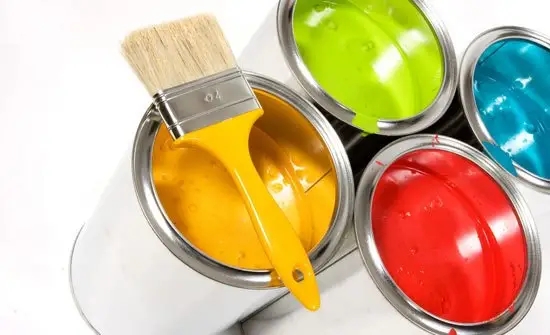Among the synthetic resins for coatings, alkyd resins have the largest output, the most varieties, and the widest range of uses, accounting for about 15% of the world’s total output of synthetic resins for coatings. my country’s alkyd resin coating production accounts for about 25% of the total coatings, and several sets of equipment with an annual output of 4,500 tons have been introduced from abroad.
(1) Alkyd resin varnish
Alkyd resin varnish is made of medium or long oil alkyd resin dissolved in an appropriate solvent (such as xylene), with a drier (such as metal diamond) added , zinc, calcium, manganese, lead naphthenate), obtained through purification. Alkyd resin varnish dries quickly, and the paint film is bright and hard. It has good wear resistance and oil resistance; but because there are residual hydroxyl and carboxyl groups in the molecules, the water resistance is not as good as that of phenolic resin tung oil varnish. It is mainly used as a varnish for furniture paint and color paint, and can also be used as a general electrical insulating paint.

(2) Alkyd resin paint
The most popular among alkyd resin paints is medium oil alkyd resin enamel, which dries quickly, has good gloss, strong adhesion, hard paint film, and is oil and weather resistant. It has many advantages and can be dried at room temperature or in the oven. It is mainly used for mechanical parts, trucks, agricultural machinery, steel equipment, etc. It can be used indoors and outdoors, and is more suitable for dry spraying.
Iron red alkyd resin primer is the most commonly used paint. It is used as a primer when painting steel objects. It dries quickly and has good adhesion. Therefore It can be used as a primer for volatile paints such as nitrocellulose paint.
The representative exterior paint made of long-oil dry alkyd resin is bridge topcoat. Its biggest feature is excellent weather resistance. Its disadvantage is low gloss. Strong. Long-oil resin has good brushability and is suitable for brush construction.
Modified alkyd resin
In addition to oil-modified alkyd resins, alkyd resins can also be modified with different polyacids, polyols, and other resins or monomers.
(1) Use pentaerythritol instead of glycerol
Due to its high activity, it is generally used to make long oil resins. Its brushability, drying, water resistance, weather resistance, color retention and other properties are better than those of glycerin Alkyd resin. If pentaerythritol and ethylene glycol are combined, when the molar ratio is 1:1, its average functionality is 3, which is the same as glycerin. It can replace glycerol to make short-oil resin. Its performance is better than that made with glycerin. The production process of pentaerythritol alkyd resin is simple.
Alkyd grease-burning paint made of trimethylol propylene instead of oil. It takes a short drying time, has a high hardness and is alkali resistant. The paint film has good color and gloss retention, as well as good baking resistance.
(2) Modification with polybasic acid
If adipic acid or sebacic acid is used instead of phthalic anhydride, the alkyd resin produced will be very soft and can only be used as a plasticizer; use Shugangan instead Benfen, the resulting resin has high viscosity and light color; use chlorine-containing dibasic acid instead of benzene, and the alkyd resin obtained has good flame resistance; the resin modified with undecylenic acid has a light color and is not prone to yellowing; When isophthalic acid is used instead of benzene, the resulting alkyd resin has an improved drying rate and superior heat resistance.
Other modified alkyd resins In alkyd resins, in addition to fatty acids, polyols, and benzene, other synthetic resins or monomers can also be added for modification. sex.

 微信扫一扫打赏
微信扫一扫打赏

